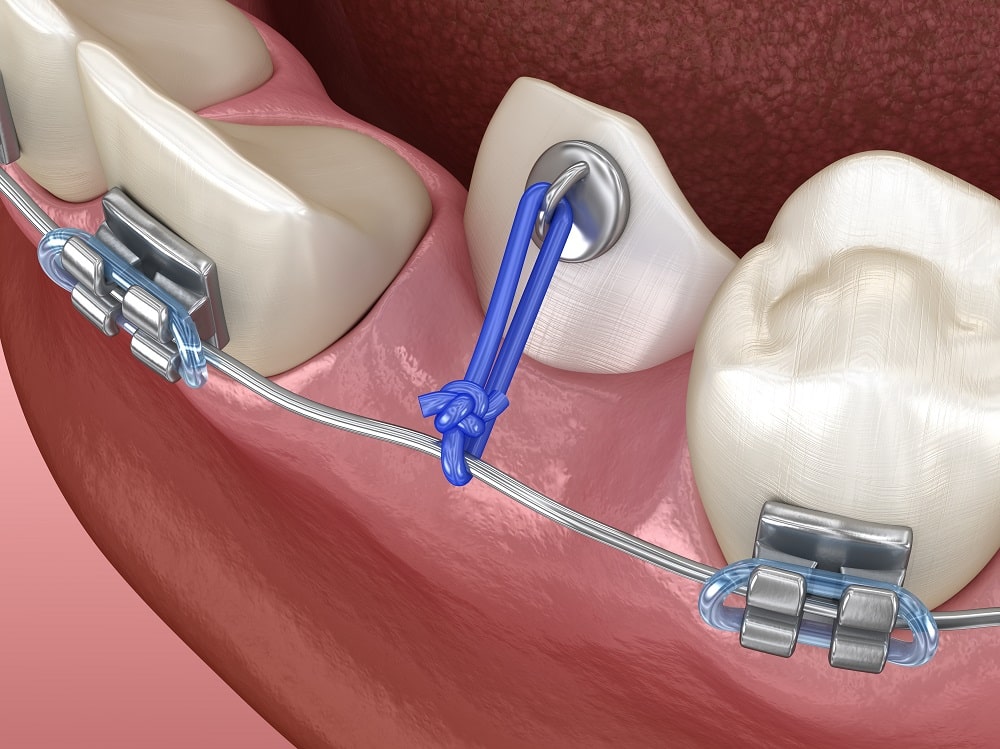
Tooth development and growth varies hugely from one person to another. The majority of people develop all their adult teeth however a small percentage have a tooth that can become impacted and stuck in the jaw bone. The most commonly buried is the wisdom teeth but often these teeth remain impacted under the gum and within the bone and do not require removal.
Partially erupted teeth erupt halfway, and the other half remains stuck under the gums.
The teeth are completely stuck under the gums and the bone.
The maxillary canine is the second most commonly impacted tooth. The canines are vital in the dental arch because they allow having a strong bite. If the maxillary canines are impacted, ensuring that they fully emerge is important.
In gold chain bonding, the oral surgeon will uncover the buried tooth and place a gold chain on the surface of the tooth. The gums are then put back into position with dissolvable stitches and the chain comes through the gum and attaches to a brace. The orthodontist will then apply gentle traction to the gold chain to gently help the buried teeth fully emerge into the correct position. This orthodontic process can be very lengthy, often taking 2-3 years with braces in place.
The oral and maxillofacial surgeon and orthodontist will work together to help the buried teeth fully erupt. The gold chain bonding procedure involves the following steps.

The primary benefit of gold chain bonding is improving the functionality and look of the teeth and a reduced risk of damage to the neighbouring teeth.
The possible complications of gold chain bonding include the following:
If you have a partially or fully buried tooth, visit Kingston Orthodontics to start your gold chain bonding procedure. You can contact us at 0203 002 2501 to book an appointment with our orthodontist.
Leaving your buried tooth in its position means you will have a missing tooth in that space. This gap may need further replacement. In some cases, a buried tooth can cause root resorption or damage to the neighbouring teeth during the orthodontic treatment. In a few cases, cystic formations may occur.
The alternative is leaving the buried tooth in, and the dentist will perform X-rays periodically to monitor it. A surgical extraction may be necessary.
You should resume normal school activities or work in 3 – 7 days after the procedure, depending on how fast your body heals.
During gold chain bonding, you will be given anaesthesia. This may be general anaesthesia or local anaethesia to prevent pain. The doctor will prescribe painkillers to ensure your recovery is comfortable.
You will be numb for a few hours following the procedure. The numbness should subside after a while, and then you may experience some mild pain which pain medication can manage. Your doctor will recommend a soft diet or mouthwash for a week after the procedure because the area will remain numb. Avoid contact sport or swimming for 7-10 days after the surgery.

Spread the cost of any treatment
We are here to help you achieve the perfect – and affordable – smile so please talk to us about our popular interest-free payment plans. Spread the cost and relax – secure in the knowledge that your treatment will take place on time and on budget.